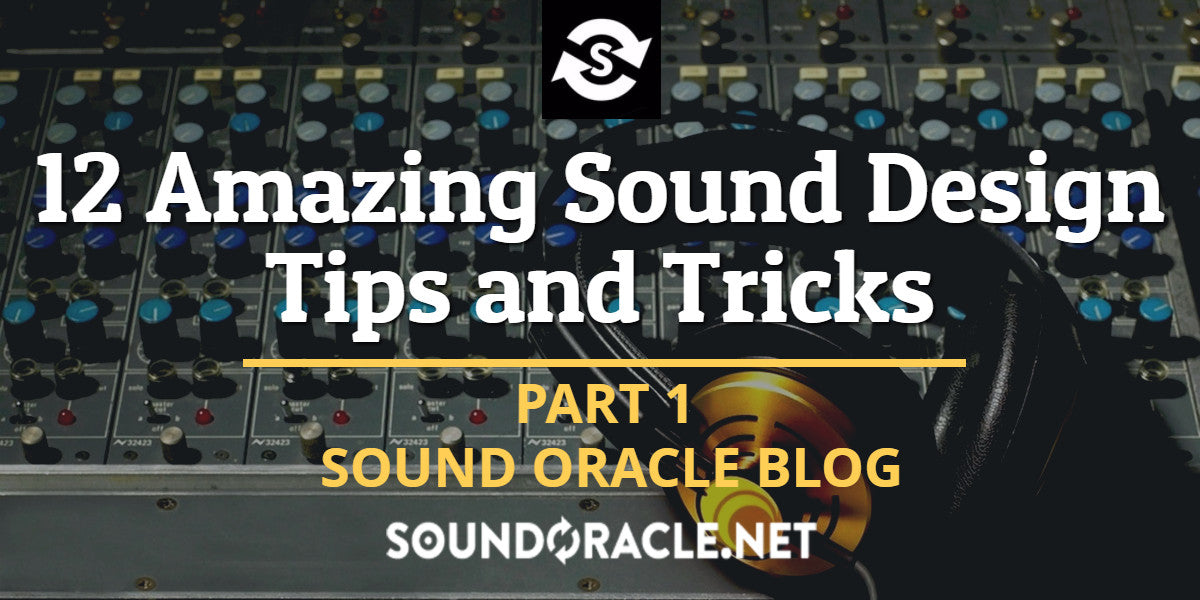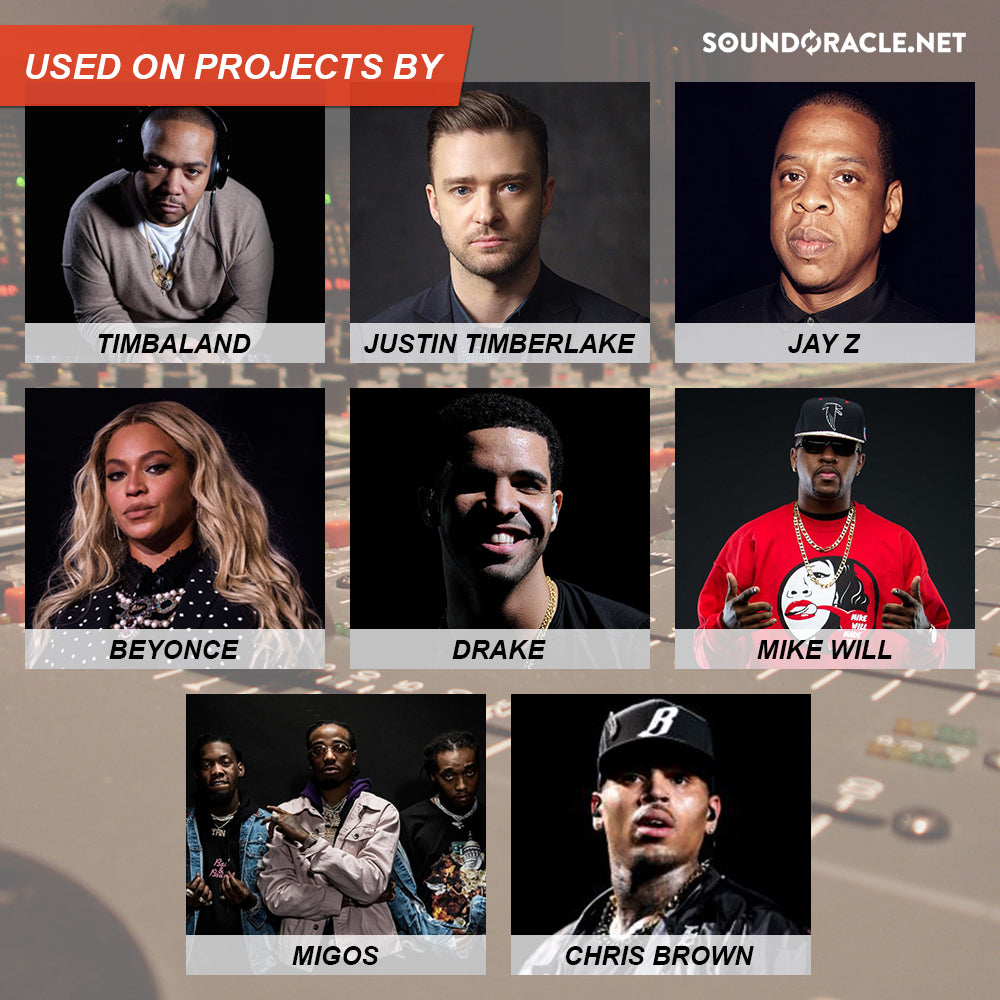
12 Amazing Sound Design Tips and Tricks (Part 1)
This blog post aims to boost the productivity of your sound design with these time tested techniques. Have you found yourself lost at sea. We have all been there including me? Sound designing is an unstructured and unrestricted art form. One can easily be distracted. Here are 12 Sound Design tips & tricks for controlling & manipulating your listener's ears. There is more to sound design than gear and plugins.
1. Record The World
You should be smart when recording "found" sounds. Most of the time these sounds will come from the outside world versus digital sources. You will need to grab your keys and get out there to search for that sound you need. You will need to record smartly using a field recorder and some tricks. When you record your sounds be aware of ambient noise. Sometimes this noise can be preferred and may add character to your sound. In most cases, the frequencies that this noise occupies will need to be edited out or avoided altogether. This is especially important when recording multiple sounds from one area. You may wish to layer these sounds when you get back to your studio. You'll notice that when you start layering, all of that noise adds up quickly. Remember to note and label all your sounds to avoid double work.
2. Take Off The Mask
Masking frequencies is an often misunderstood concept of audio recording. Masking is when one sound muddles another. There is one specific type of masking called Frequency Masking. This is when one component of sound interrupts with the tonality of another sound. This is a crucial aspect to listen for. However, this is only part of a bigger issue. Sound designers have addressed this as an arrangement and dynamic issue. When two sounds happen instantaneously, there will be a tendency of interference with each other. More times than often this will yield a less than desirable sound. Say you laid down your kick and snare and thought it was cool. Then you bring in a bass synth and quickly realize your kick now sounds like trash. This is because our ears have limits on distinguishing between individual sounds. Hence, the loader sound will either partly or fully obscure the other which looks like it disappeared from the mix. Because of this phenomenon, the EQ was developed which helps carve out the masking frequencies while mixing. However, it is best to avoid it while on the writing and arranging process. You can use limited note ranges aNFL proper patch or instrument choices to keep this problem to a minimum. But there will be a time; it will still appear no matter how careful you are. remember to watch out for harmonics which also contribute to the overall resonance and frequency range.
3. Layer Up
You can get the perfect sound from a single source, but when you layer things up, your sound gets bigger and better. You can do this to almost any sound. Layering is an essential technique of sound design. However, pay attention to details as your sounds must match. Do your layers mask each other? Do the sounds complement each other? What happens when you separate them? Believe me, it sounds easy. But it is time consuming and takes a lot of patience. However, it is worth the experimentation. It makes a huge difference at the end. Remember, our ears can be easily tricked into not knowing when one sound ends and another begins . It is a psycho-acoustic phenomenon that layering can take advantage of. If done right, you will read it as one big textured sound.
4. Bring The Noise
To add variety why not add excitement by using plain and old-fashioned noise? The majority of DAWs include a built-in noise generator plug-in. It comes with a variety of types. However, the common ones include are white, pink, and brown noise. If you want equal energy across frequencies, use white noise. For octave frequencies, use pink. For application, test it first and hear how it sounds. Another way is to add an automated burst of white noise to a synthesizer. It is also great for spicing up snares.
5. Create Intensity and Loudness at Low Volumes
Our ears mostly detect middle-range sounds more than extreme high and low end frequencies. One still can manipulate the ears nonlinear response to different frequencies and volumes in the mix to help create a sharp impression of command and volume. in every day life we rarely notice the difference, but when mixing and sound designing, this becomes apparent immediately. Given this phenomenon, all sound designers should be able to achieve balance even at low volumes. This will also prevent your ears from experiencing fatigue. Loud volumes are not the best choice as they are not good in creating and accurate balance. When sound designing, it is a good idea to test your sounds out at a reasonable level and on different speakers and headphones. The best mix results are from taking into account the end listener and their environment.
6. The Unequal Loudness Contours or Fletcher-Munson Curve
If you want to get better at music producing, you MUST understand how the Fletcher-Munson curve works. In 1930s, Bell Telephone researchers, Harvey Fletcher and Wilden A. Munson, published a paper in the Journal of the Acoustic Society of America entitled “Loudness, its Definition, Measurement and Calculation.” They presented a set of curves which they called Fletcher-Munson Curve. The experiment showed how loud you will need to play, testing different frequencies to profess at the same loudness.
The opposite of the quick and loudness effect of the ears nonlinear response is just as useful for mixing purposes. To make the sounds sound further away, you must learn to produce a sense of frontal and backward depth in your mix. For example, you must aim to push certain instruments further away. While at the same time, keeping otheir sounds in the forefront. To achieve this we must learn to adjust the sounds high and low frequency energy.
The reason for this is that our ears have acclimatized the basic laws of physics. Here are questions to consider:
-
●How do we identify what sound gets beyond very short distances?
-
●What is the limit on how far a sound can travels?
-
●How much high-frequency and low-end energy we can experiment with?
-
●Which sound will disappear into thin-air?
If you are mixing why not try pushing a sound further back? Then, experiment with higher volume frequencies. And test it behind other sound elements. This is a great technique for highlighting lead vocals against backup vocals. Adding reverb is always great for creating distance as well .
7. The Saturated Fat
Now let’s talk about the Saturation Effect. This is when you raise the volume of your audio which simultaneously affects the next device's ability to handle the volume. The effect is a distorted effect on louder parts of the sound while softer parts of the sound are left untouched. This is an auditory behavior which acts like a compressor, but it is much more punishing. When sound designing , it can add more spice and fatness to your sounds. Adding too much saturation to a sound can get messy and mushy. Just experiment until your desired result is achieved.
8. Haas Effect
The Haas Effect was first described by the acoustician Helmut Haas in 1941. This trick behind this technique can make a mono sound into the illusion of a fantastic stereo sound. It is easy to master. All you have to do is pick two identical mono sounds. Then, take one and pan it hard left and the other one hard right. Delay one sound a few milliseconds later than the other. This technique tricks the brain into thinking you are hearing one winded sound. Experiment with the delay time to vary the intensity of the effect . Be aware the shorter you delay the time being used, the more you will be prone to be producing an unwanted comb filtering. Since you are using two separate sounds, try adding different effects to each one. For instance, use LFO modulation on one sound and add a filter effects to the other. However, don’t abuse the Haas Effect technique. Over using this technique in a single song can sometimes ruin your stereo field image.
9. Reverb Early Reflection ‘Ambience’ For Thickening Sounds
To thicken and warm sounds, try adding a reverb and give it an early reflection via the reverb plugin. Mastering the reverb effect will definitely transform and thicken your sounds. The principle is that reverb will push and diffuse your sounds into the background. The trick here is to extend the louder section of the sound in a natural ambient way. This can easily be fine-tuned using various reverb plugin controls for a slighter thicker sound. You can also try using a combo of delay and reverb. For more bounce, put the delay slightly to the right, while the reverb is slightly to the left. As usual, experiment.
10. Don't Forget to Stretch
Time stretching is a familiar trick for sound designers. Typically, the method is to take the sound and shorten or elongate it, which gives that glitch sounding electrifying effect. This process will change the speed or length of the audio signal while at the same time, not affecting the pitch. The process of time stretching in real time is very useful (especially when using certain DAWs). For example, the functionality of Ableton allows you to bend the laws of time in very creative ways. This in turn will give you incredible textures. To get even more variation, try using different stretching algorithms if your DaW has them.
11. Scheduled Sessions
Sound designing can be time consuming especially when you do not have a goal in mind. The first productivity tip is setting a fixed time for your sound design and keep it separate from your producing as much as possible. Then, make sure your sound libraries are organized so you can easily dive into your favorite synths and personal sounds. Tweak, change and alter to your liking. Don’t forget to save and give it a cool name. Then, repeat the process until the end of your session. The best sessions are uninterrupted. Meaning you will need to plan. No Wi-Fi and turn off your phone. Update all your plug-ins. And don’t forget your brain food that will help boost your mind in creating dope sounds. Additionally, when you are having a production session be steadfast with your convictions meaning to quickly commit to your sound choices to avoid turning your production sessions into sound design sessions.
12. Record everything you Create
The best habit to implement is to always record everything you create. For this, you can use a separate wave editor or program to record the audio of your session. This is the best way to capture those "happy mistakes. I also like to use it like audio "sticky notes". For example, if I was freestyling a drum pattern and suddenly forgot a pocket i just played, I can always go back and listen to it again. The benefits of this technique are numerous. Remember, something that may not sound good to you right now may spark an idea tomorrow. Record everything!







